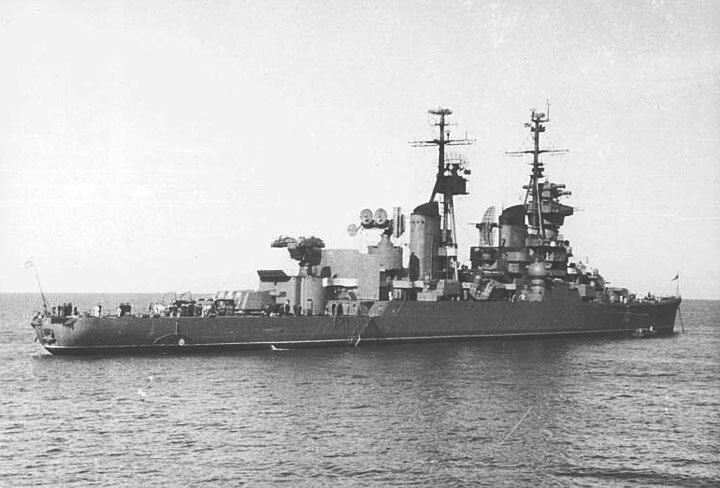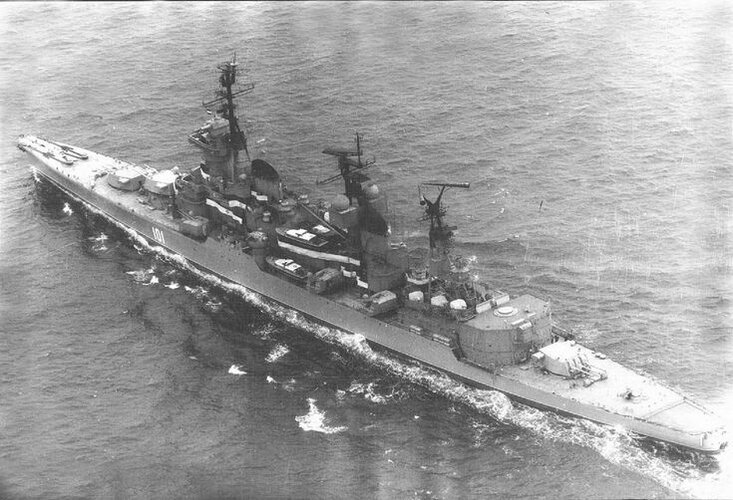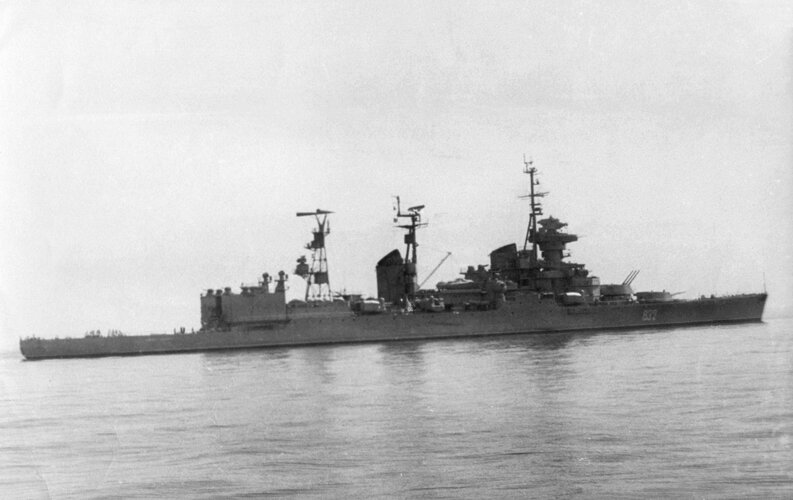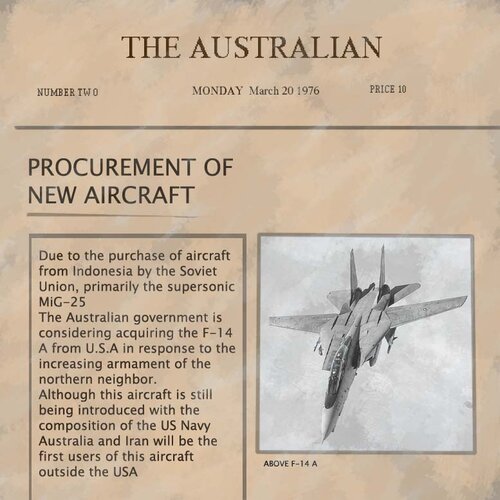Dilandu
I'm dissatisfied, which means, I exist.
So let's assume that Indonesian socialist leader Sukarno was more competent in terms of economic (or at least listened to better advisor) and managed to avoid the economy crisis that led to his downfall in OTL 1966. He remained relatively popular and in power; Indonesia remained socialistic and pro-Soviet. And Indonesian military continued to get new and better weapons from USSR; subsonic Tu-16KS bombers were replaced with supersonic Tu-22K. Mig-19 fighters gave way to Mig-23 and Mig-25 interceptors. Old gun-armed Project 30-bis destroyers were replaced with export-build Project 61 anti-submarine ships, equipped with state-of-art surface-to-air and anti-ship missiles.
For the Australia, dangerous times started. It have a constant source of threat now - and not somewhere far away, but just a few hundred kilometers to the north. Indonesian warships roamed Timor sea, locking their fire control radars on Australian shipping. Long-range jet bombers and patrol planes were reaching as far as Perth. High-altitude Mig-25R recon planes buzzed over Darwin, blatantly disregarding Australian air space.
What would Australia do in such situation? Of course, it need a better military than in OTL - the opponent it faced is close enough to be a direct threat to Australian mainland. What exactly Australia should seek to procure then?
P.S. To simplify the situation, let's assume that Indonesia have access to roughly the same level of Soviet-build hardware as Iraq. With a larger emphasis of navy, of course. I.e.:
INDONESIA:
AIR FORCE
* Mig-21, Mig-23MS as main fighters (about 200 units), Mig-25PD as interceptors (about 50 units), a small number of Mig-19 and Mig-17 as point-defense interceptors
* Mig-25RB as high-altitude fast recon & high-altitude strike planes (about 25 units)
* Tu-16K and Tu-22K as long-range bombers with KSR-2 and KSR-11 missiles (about 25 + 25 units)
* Su-17 and Mig-27 fighter-bombers as short-range attack planes (about 200 units)
NAVY
* Project 68bis cruiser (the "Irian", single units) - refitted replacement of X turret with one Osa-M self-defense SAM and four dual 57-mm AK- 725 autocannons
* Project 56BE missile destroyers (Kotlin-class, four units) - Project 56 destroyers, refitted with the replacement of rear turret with Volna-M SAM and forward turret with two 76-mm dual AK-726 autocannons. Torpedo banks replaced with four P-15/P-15M launchers
* Project 30BKM missile destroyers (six units) - Project 30-bis destroyers, refitted with the replacement of torpedo bunks with P-15/P-15M launchers and installation of a single ZIF-75 four-barrel 57-mm gun and three AK-230 30-mm autocannons
* Project 30K destroyers (two units) - non-modified Project 30-bis, used as training ships
* Project 159AE anti-submarine frigates (Petya-class, eight units) - increased anti-aircraft armament by replacement of rear 76-mm gun with Osa-M SAM & installation of additional AK-230 autocannons
* Project 50 anti-submarine frigates (Riga-class, six units in service) - increased anti-aircraft armament by installation of additional AK-230 autocannons
* Project 1234E missile corvettes (Nanuchka-class, eight units)
* Project 205 missile boats (Osa-class, eight units)
* Project 185R missile boats (Komar-class, eight units in service)
* Project 633 submarines (Romeo-class, six units)
* Project 613 submarines (Whiskey-class, six units in service, additional two used as training ships)
* Project 266 and Project 266M minsweepers (Yurka and Natya class, twelve units in total)
* Project 770 and Project 770M and Project 771 medium amphibious ships (Polnocny-class, Polish-build, twelve units)
* Naval patrol aviation have two squadrons, one of ten Il-38 patrol planes, the other of twelve Be-12 flying boats
* Naval strike aviations have two squadrons, one of Su-7UMK, the other of Su-20 fighter-bombers
* Naval fighter aviation have two squadrons of Mig-23MS fighters, modified for extended range (required over sea)
Procurement plans for 1980s include:
* One Project 1134 missile cruiser (retired from Soviet Navy, downgraded to export standards) as repacement for Irian
* Four Project 956ME destroyers (the proposed, but never build export version of Project 956 destroyer, with 100-mm cannons, Volna-M SAM and P-35M Progress missiles) - to replace the existing destoryer fleet
* Six Project 1159 light frigates (Koni-III class) - to replace the Project 159AE and Project 50 anti-submarine frigates
* Two-to-four Project 877E submarines, to replace the Project 613 and later Project 633 boats
* Negotiations are conducted with USSR and China about modernizing a pair of existing Project 633 submarines to surface-launch P-15M anti-ship missiles from deck-mounted containers
ARMY
* S-75, S-125 land-based SAM's, a limited number of S-200 long-range SAM's (export versions)
* Coastal missile batteries with P-15M missiles
* Army units mainly equipped with legacy Soviet era weapons, like T-34 and T-54 tanks, M-30 howitzers, BTR-50 APC's. Several elite reigments are equipped with newer weaponry, such as T-62 tanks, PT-76 light tanks, D-30 howitzers and mobile SAM systems.
AUSTRALIA:
Royal Australian Navy:
Carriers:
HMAS Australia (former HMS Hermes) - obtained in 1969, fully commissioned 1972, get her Crusaders circa 1974-1975. Air wing composed of F-8E (FN) Crusaders (French-refitted to use SAHR R.330 missiles), A-4 Skyhawks (both attack & buddy tanker version), E-1 Tracer AEW planes (USN surplus) and ASW helicopters.
HMAS Melbourne - reduced to active reserve since 1973, maintained as anti-submarine carrier for the case of "big war" and reserve carrier in case HMAS Australia would be damaged/undergoing repairs. Only operates Skyhawks and Tracker ASW planes.
Destroyers:
Perth-class missile destroyers (HMAS Perth, HMAS Hobart, HMAS Brisbane) - in service as OTL, modified from Tartar to Standard in mid-1970s. Ikara GMLS modified to fire Ikara-based SSM (Dropbear SSM)
Daring-class destroyers (HMAS Vampire, HMAS Vendetta, HMAS Duchess) - reduced to training roles & reserve since 1980. Fitted with container-based SSM in mid-1970s
Darwin-class light destroyers (HMAS Darwin, HMAS Adelaide, HMAS Brisbane, HMAS Tobruk (in construction), HMAS Voyager (in construction), HMAS Arunta (in construction)) - modified DDL project, with heavier emphasis on surface warfare. Only one helicopter, but four box launchers for Dropbear SSM and self-defense system (American Sea Sparrow or French Crotale) installed. In service since late 1970s, gradually replacing River-class and Daring-class units.
Frigates:
Leander-class frigates (HMAS Swan and HMAS Torres) - in service, equipped with self-defense SAM. Ikara GMLS modified to fire Ikara-based SSM (Dropbear SSM)
River-class frigates (four units) - gradually replaced by light destroyers
Corvettes:
Townsville-class missile corvettes (eight units) - build instead of OTL Fremantle-class patrol boats. Much larger, missile-capable units (four container launchers for Ikara/Dropbear), closevto initial plans for DDL ships. Armed with a 76-mm OTO Melara gun and self-defense SAM (Sea Sparrow or Crotale)
Submarines:
Oberon-class patrol submarines (eight units) - as OTL, but two nore units ordered in first half of 1970s.
Planned procurement for 1980-1990s:
* An American-build medium carrier (modified Tarawa hull, COSAG powerplant) to replace HMAS Australia by late 1980s.
* 2-3 air defense Spruance-class destroyers (Kidd-class) to replace Perth-class in 1990s
* NTU refit for Perth-class in 1980s, to use SM-2MR
* Two more light destroyers, to replace Leander-class frigates
* Four Upholder-class submarines to gradually replace Oberon-class
Royal Australian Air Force:
* F-4 Phantoms obtained in 1970s timeframe - as both interceptor and strike plane
* F-14 Tomcat ordered since late 1970s - as area defense interceptors and long-range fighters
* A limited number of E-1 Tracer AEW planes ordered in 1970s for radar coverage. Replaced in 1980s by Orion-Hawkeye AEW planes (AEW plane, based on Orion patrol plane, fitted with E-2 Hawkeye radar & electronics)
Royal Australian Army:
* Three complete flights of Bloodhound Mk-2 missiles (mobile version) obtained to provide area defense.
For the Australia, dangerous times started. It have a constant source of threat now - and not somewhere far away, but just a few hundred kilometers to the north. Indonesian warships roamed Timor sea, locking their fire control radars on Australian shipping. Long-range jet bombers and patrol planes were reaching as far as Perth. High-altitude Mig-25R recon planes buzzed over Darwin, blatantly disregarding Australian air space.
What would Australia do in such situation? Of course, it need a better military than in OTL - the opponent it faced is close enough to be a direct threat to Australian mainland. What exactly Australia should seek to procure then?
P.S. To simplify the situation, let's assume that Indonesia have access to roughly the same level of Soviet-build hardware as Iraq. With a larger emphasis of navy, of course. I.e.:
INDONESIA:
AIR FORCE
* Mig-21, Mig-23MS as main fighters (about 200 units), Mig-25PD as interceptors (about 50 units), a small number of Mig-19 and Mig-17 as point-defense interceptors
* Mig-25RB as high-altitude fast recon & high-altitude strike planes (about 25 units)
* Tu-16K and Tu-22K as long-range bombers with KSR-2 and KSR-11 missiles (about 25 + 25 units)
* Su-17 and Mig-27 fighter-bombers as short-range attack planes (about 200 units)
NAVY
* Project 68bis cruiser (the "Irian", single units) - refitted replacement of X turret with one Osa-M self-defense SAM and four dual 57-mm AK- 725 autocannons
* Project 56BE missile destroyers (Kotlin-class, four units) - Project 56 destroyers, refitted with the replacement of rear turret with Volna-M SAM and forward turret with two 76-mm dual AK-726 autocannons. Torpedo banks replaced with four P-15/P-15M launchers
* Project 30BKM missile destroyers (six units) - Project 30-bis destroyers, refitted with the replacement of torpedo bunks with P-15/P-15M launchers and installation of a single ZIF-75 four-barrel 57-mm gun and three AK-230 30-mm autocannons
* Project 30K destroyers (two units) - non-modified Project 30-bis, used as training ships
* Project 159AE anti-submarine frigates (Petya-class, eight units) - increased anti-aircraft armament by replacement of rear 76-mm gun with Osa-M SAM & installation of additional AK-230 autocannons
* Project 50 anti-submarine frigates (Riga-class, six units in service) - increased anti-aircraft armament by installation of additional AK-230 autocannons
* Project 1234E missile corvettes (Nanuchka-class, eight units)
* Project 205 missile boats (Osa-class, eight units)
* Project 185R missile boats (Komar-class, eight units in service)
* Project 633 submarines (Romeo-class, six units)
* Project 613 submarines (Whiskey-class, six units in service, additional two used as training ships)
* Project 266 and Project 266M minsweepers (Yurka and Natya class, twelve units in total)
* Project 770 and Project 770M and Project 771 medium amphibious ships (Polnocny-class, Polish-build, twelve units)
* Naval patrol aviation have two squadrons, one of ten Il-38 patrol planes, the other of twelve Be-12 flying boats
* Naval strike aviations have two squadrons, one of Su-7UMK, the other of Su-20 fighter-bombers
* Naval fighter aviation have two squadrons of Mig-23MS fighters, modified for extended range (required over sea)
Procurement plans for 1980s include:
* One Project 1134 missile cruiser (retired from Soviet Navy, downgraded to export standards) as repacement for Irian
* Four Project 956ME destroyers (the proposed, but never build export version of Project 956 destroyer, with 100-mm cannons, Volna-M SAM and P-35M Progress missiles) - to replace the existing destoryer fleet
* Six Project 1159 light frigates (Koni-III class) - to replace the Project 159AE and Project 50 anti-submarine frigates
* Two-to-four Project 877E submarines, to replace the Project 613 and later Project 633 boats
* Negotiations are conducted with USSR and China about modernizing a pair of existing Project 633 submarines to surface-launch P-15M anti-ship missiles from deck-mounted containers
ARMY
* S-75, S-125 land-based SAM's, a limited number of S-200 long-range SAM's (export versions)
* Coastal missile batteries with P-15M missiles
* Army units mainly equipped with legacy Soviet era weapons, like T-34 and T-54 tanks, M-30 howitzers, BTR-50 APC's. Several elite reigments are equipped with newer weaponry, such as T-62 tanks, PT-76 light tanks, D-30 howitzers and mobile SAM systems.
AUSTRALIA:
Royal Australian Navy:
Carriers:
HMAS Australia (former HMS Hermes) - obtained in 1969, fully commissioned 1972, get her Crusaders circa 1974-1975. Air wing composed of F-8E (FN) Crusaders (French-refitted to use SAHR R.330 missiles), A-4 Skyhawks (both attack & buddy tanker version), E-1 Tracer AEW planes (USN surplus) and ASW helicopters.
HMAS Melbourne - reduced to active reserve since 1973, maintained as anti-submarine carrier for the case of "big war" and reserve carrier in case HMAS Australia would be damaged/undergoing repairs. Only operates Skyhawks and Tracker ASW planes.
Destroyers:
Perth-class missile destroyers (HMAS Perth, HMAS Hobart, HMAS Brisbane) - in service as OTL, modified from Tartar to Standard in mid-1970s. Ikara GMLS modified to fire Ikara-based SSM (Dropbear SSM)
Daring-class destroyers (HMAS Vampire, HMAS Vendetta, HMAS Duchess) - reduced to training roles & reserve since 1980. Fitted with container-based SSM in mid-1970s
Darwin-class light destroyers (HMAS Darwin, HMAS Adelaide, HMAS Brisbane, HMAS Tobruk (in construction), HMAS Voyager (in construction), HMAS Arunta (in construction)) - modified DDL project, with heavier emphasis on surface warfare. Only one helicopter, but four box launchers for Dropbear SSM and self-defense system (American Sea Sparrow or French Crotale) installed. In service since late 1970s, gradually replacing River-class and Daring-class units.
Frigates:
Leander-class frigates (HMAS Swan and HMAS Torres) - in service, equipped with self-defense SAM. Ikara GMLS modified to fire Ikara-based SSM (Dropbear SSM)
River-class frigates (four units) - gradually replaced by light destroyers
Corvettes:
Townsville-class missile corvettes (eight units) - build instead of OTL Fremantle-class patrol boats. Much larger, missile-capable units (four container launchers for Ikara/Dropbear), closevto initial plans for DDL ships. Armed with a 76-mm OTO Melara gun and self-defense SAM (Sea Sparrow or Crotale)
Submarines:
Oberon-class patrol submarines (eight units) - as OTL, but two nore units ordered in first half of 1970s.
Planned procurement for 1980-1990s:
* An American-build medium carrier (modified Tarawa hull, COSAG powerplant) to replace HMAS Australia by late 1980s.
* 2-3 air defense Spruance-class destroyers (Kidd-class) to replace Perth-class in 1990s
* NTU refit for Perth-class in 1980s, to use SM-2MR
* Two more light destroyers, to replace Leander-class frigates
* Four Upholder-class submarines to gradually replace Oberon-class
Royal Australian Air Force:
* F-4 Phantoms obtained in 1970s timeframe - as both interceptor and strike plane
* F-14 Tomcat ordered since late 1970s - as area defense interceptors and long-range fighters
* A limited number of E-1 Tracer AEW planes ordered in 1970s for radar coverage. Replaced in 1980s by Orion-Hawkeye AEW planes (AEW plane, based on Orion patrol plane, fitted with E-2 Hawkeye radar & electronics)
Royal Australian Army:
* Three complete flights of Bloodhound Mk-2 missiles (mobile version) obtained to provide area defense.
Last edited:




